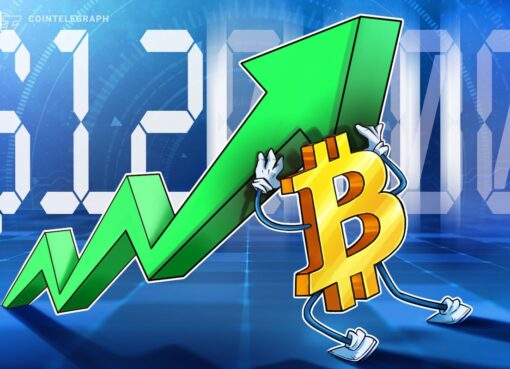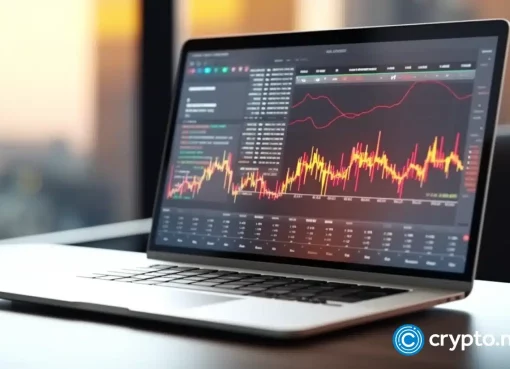The throughput of blockchains — namely, their ability to process X number of transactions per second (TPS) — is often touted in such a way as to downplay other considerations, such as decentralization and security. The blockchain trilemma, of course, acknowledges that succeeding in all three areas is challenging, though not impossible.
There is no denying that throughput and scalability are important, indeed vital if blockchains are eventually to become the rails on which the financial system is run. However, there is a major misconception surrounding the metric used to assess the scalability of layer-1s and 2s.
Although super-fast blockchains love nothing more than to trumpet their TPS numbers, it is a rather inadequate method for assessing throughput and fails to accurately represent legitimate blockchain transactions. What’s more, numbers are often reported in inconsistent or haphazard ways, making it tricky to compare projects and obscuring what matters most in practice.
So, when networks brag about five-figure TPS speeds, take their audacious claims with a healthy pinch of salt.
A missold metric
If blockchain technology is ever going to be adopted at scale, it must be capable of handling huge volumes of data at high speed. That way, people can access the network when they need it, without contending with logjams or having to pay eye-watering transaction fees. This is clear.
However, a high TPS doesn’t necessarily assure this, as the figure is usually measured by dispatching a protocol token from one wallet to another, as expeditiously as possible. This is the most basic transaction that can be made on a blockchain. Transferring protocol tokens is not a very computationally intensive transaction, which is why it is cheaper to send Ether (ETH) than, say, transfer an ERC-20 — the latter contract contains much more complex data.
Related: Programming languages prevent mainstream DeFi
Indeed, the majority of transactions are more complex than simple transfers. DeFi transactions, for instance, are resource-intensive, which explains why token swaps cost more in gas than simple transfers. Moreover, some chains include transactional data that isn’t usually calculated as transactions on other networks.
In the case of Solana, around 80% of transactions are made up of its own consensus messages, which are needed to coordinate validators. Despite being processed separately from on-chain transactions, they are confusingly batched with user transactions on Solana’s blockchain, giving an inaccurate measure of its true TPS.
TRANSACTIONS PER SECOND BETWEEN BLOCKCHAINS
The chart below showed the Transaction per second between blockchains. So far, @solana is still the layer 1 which is able to handle the most transactions at once, 65,000 TPS, with the nearly 0 cost!#SolanaSummer #Solanaszn pic.twitter.com/kE7nrJ7Rzi
— Solana Daily (@solana_daily) September 13, 2021
Throughput isn’t the only gauge of blockchain performance, of course: Latency refers to how quickly a transaction can get confirmed after it is submitted. This, too, has its own unit of measurement — namely, block time (the time between blocks being added to the chain) and time to finality (when a block passes the threshold beyond the risk of reversion).
Although throughput is seen as the big-ticket number, users actually care more about latency — how quickly their transactions execute — and how much they have to pay in transaction fees. Like throughput, latency is complex, as it varies according to numerous factors, including transaction fees (on some chains, you can pay more to get a higher priority of inclusion), system demand and batching rules.
Swaps per second > TPS
Given the frenzied activity we have witnessed in decentralized finance over recent years — swapping, lending and collateralizing — such transactions are more reflective of how blockchains are actually being used to transfer value. Unlike a simple A-to-B transfer that doesn’t require much computation or data reading, swaps are highly complex.
In such a transaction:
- The balance of the liquidity pool must be measured/read to determine the swap rate
- Token A is sent from the end-user to the swap pool
- Token B is sent from the swap pool to the end-user
- The pool must then be rebalanced
- A fee is typically taken out, and the yield is transferred to yet another account
If it isn’t already obvious, this process calls for an entirely new method of measurement — one that does not account for non-transactional data a la Solana: swaps per second (SPS). As evidenced by research compiled by consumer insights agency Dragonfly, a perfect benchmark to assess throughput is to fill an entire block with Uniswap v2-style trades and assess how many trades actually clear per second. The effect is to produce a simple apples-to-apples comparison of Ethereum Virtual Machine (EVM) blockchains, more so than any TPS measurement could attain.
Related: The world could be facing a dark future thanks to CBDCs
Dragonfly’s research found that Solana’s mainnet can likely perform around 273 swaps/second on an automated market maker — a far cry from its advertised 3,000 TPS. BNB Smart Chain, meanwhile, managed 194.6 TPS (claimed: 300 TPS) and Avalanche a maximum of 175.68 (claimed: 4,500 TPS).
Better benchmarking is required
For the avoidance of doubt, no metric is perfect. Any comparison of blockchains must necessarily account for different elements, such as decentralization, usability, security, tooling, etc. But it’s quite clear that swaps per second are a better gauge of performance and throughput than transactions per second.
Based on the findings of Dragonfly, not to mention the EOS Network Foundation’s similar benchmarking for the EOS EVM, blockchains have a long way to go before they’re ready for mainstream adoption.
Zack Gall is the co-founder and chief communications officer of the EOS Network Foundation. He previously co-founded Dappiness Development Studio and worked as the head of community and developer relations for LiquidApps. He graduated from Muskingum University in 2009 with a BA in communication and media studies.
This article is for general information purposes and is not intended to be and should not be taken as legal or investment advice. The views, thoughts, and opinions expressed here are the author’s alone and do not necessarily reflect or represent the views and opinions of Cryptox.




